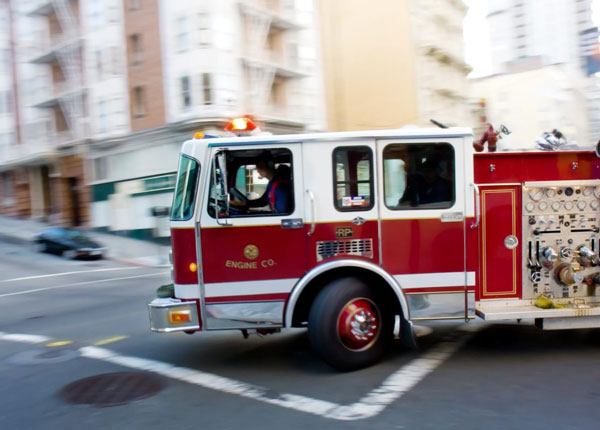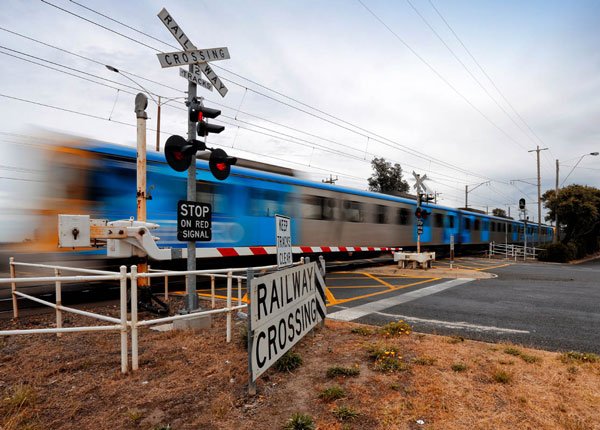
Sharing the Road with Emergency Vehicles: Right-of-Way, Traffic Rules & Penalties
Updated Nov. 20, 2020Motorists must exercise caution around emergency vehicle operators, as they are exempt from adhering to standard road rules when their sirens and lights are activated. This makes them incredibly unpredictable.
Emergency vehicles right-of-way
Motorists, cyclists and pedestrians must yield the right-of-way to any emergency vehicle using sirens or flashing lights. Emergency vehicles include ambulances, law enforcement vehicles, fire trucks and any other state or federal vehicle designed for a similar function to one of those listed here, that is properly equipped with red or blue flashing lights and an audible warning system.
Whenever you hear a horn, bell or siren warning or see flashing red or blue lights, you must clear a path for the approaching emergency vehicle and stop. Do so calmly, whilst following the procedure outlined below. Do not panic, stop suddenly or slam on the brakes.
- 1

- 2

Determine from which direction the emergency vehicle is coming.
- 3

Move your vehicle away from the approaching emergency vehicle, toward the side of the road and stop.
- 4

If the emergency vehicle is directly behind your vehicle in heavy traffic, keep moving slowly until you have enough space to get out of the way.
Avoid blocking intersections
While you must move your vehicle out of the path of an emergency vehicle and stop as soon as possible, you must never stop partway through an intersection. This could turn your vehicle into an obstacle for the approaching emergency vehicle driver. If you are in an intersection when you become aware of the emergency vehicle, it is essential that you drive out of the intersection before pulling over.
Emergency vehicle drivers may use a loud-speaker to communicate with motorists who are blocking their path. Should this happen to you, remain calm and do your best to follow their instructions.
Conflicting signs and traffic signals
If a police officer or fire-fighter instructs you to do something that conflicts with existing signs, signals and road laws, you must obey them anyway. Instructions given by a fire-fighter or law enforcement officer may stand in opposition to the usual rules of the road, for your own safety and the safety of others.
Be aware that emergency vehicle drivers can legally:
- Exceed the speed limit
- Pass through red lights
- Pass through yield and stop signs
- Drive the wrong way up a one-way street
- Make turns which would not be allowed under normal circumstances
Following an emergency vehicle
It is against the law to follow an emergency vehicle that has active sirens and flashing lights too closely. This law has been introduced in most states to prevent opportunistic drivers from using an emergency vehicle’s clear wake to get ahead of other traffic. The precise distance which must be maintained is different state by state, as are the fines and penalties you may incur by breaking this law.
In California, drivers must remain at least 300ft behind an emergency vehicle. However, in Mississippi and Florida, the minimum distance is 500ft. Always check your state driver’s handbook for details, to make sure you are following the right rules.
Approaching a stopped emergency vehicle
Many states have introduced what is often known as the “move over law”, to help protect emergency responders while they are parked and working by the roadside. The correct procedure for approaching an emergency vehicle that has stopped on or close to the roadway is different state-by-state, though two things are common everywhere. If an emergency vehicle is parked with lights flashing, other motorists must:
- Move to a lane further away from the emergency vehicle, when the road has two or more lanes of traffic traveling in the same direction
- Reduce speed. Particularly when changing lanes is not possible
Your driving manual may stipulate the speed at which you should approach and pass a stopped emergency vehicle if you cannot move over into a different lane; this information can likely be found in the chapter pertaining to sharing the road with emergency vehicles. Most state rules set the maximum passing speed at around 20mph when you must use a lane directly adjacent to a stopped emergency response vehicle. The speed you are asked to slow to will be determined by the original speed limit and width of the road.
For example, in Texas drivers must slow to a speed of not more than 20mph when the posted speed limit is over 25mph, or a speed less than 5mph when the posted speed limit is less under 25mph.
The only occasion when the “move over law” does not apply (if it is a legal requirement in your state), is if you are instructed to take a different action by a law enforcement officer at the scene.
Interfering with emergency responders
You can be arrested if you drive to the scene of an accident for sight-seeing purposes or behave in a way that may prevent an emergency response team from doing their job correctly. Casually observing the scene of an emergency may seem harmless but when many people do it simultaneously, traffic can get out of hand and emergency responders may be hindered or put at risk.
In Illinois and various other states, the use of cellphones and cameras on an accident scene is a crime. Consult your state driver’s handbook to make sure you know what is and is not allowed in such situations.




